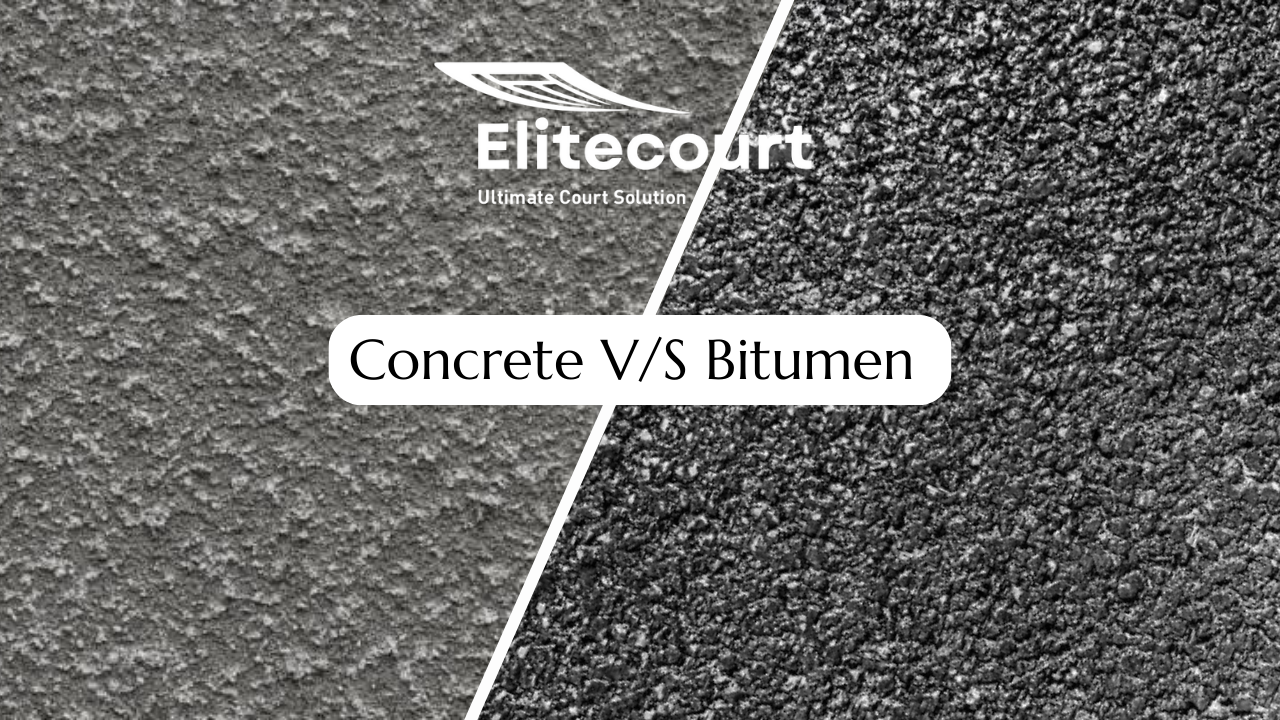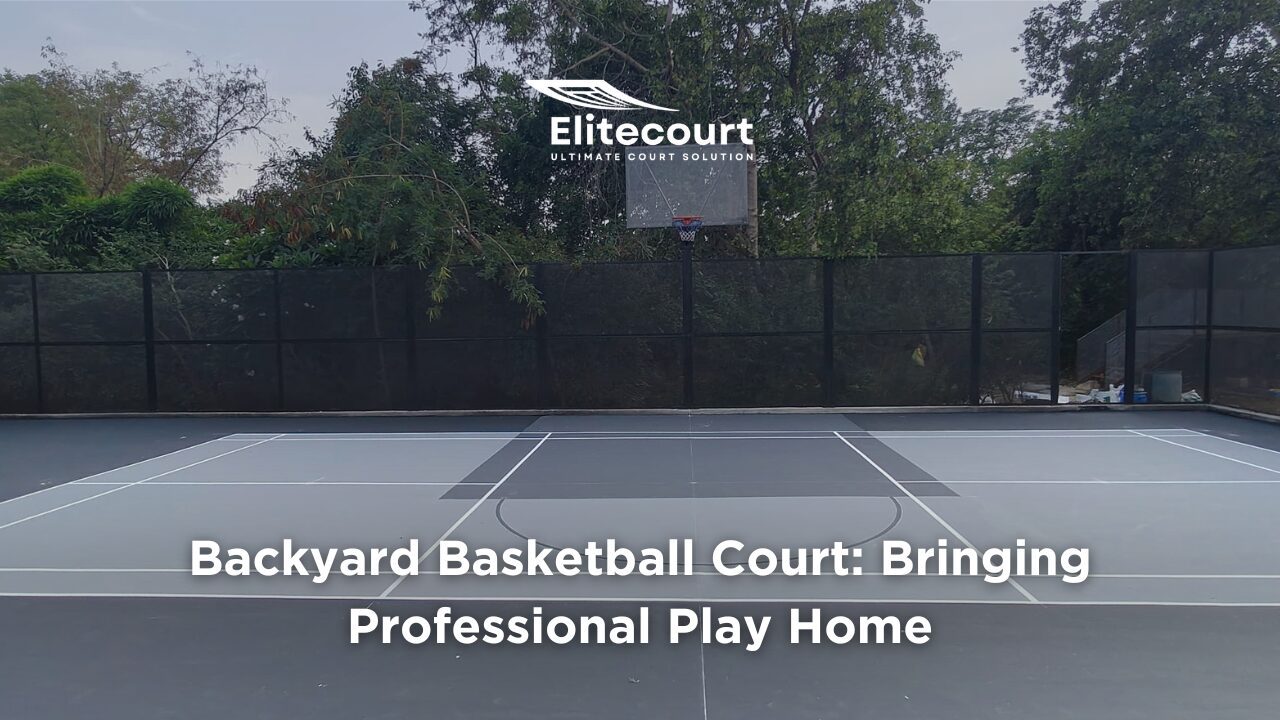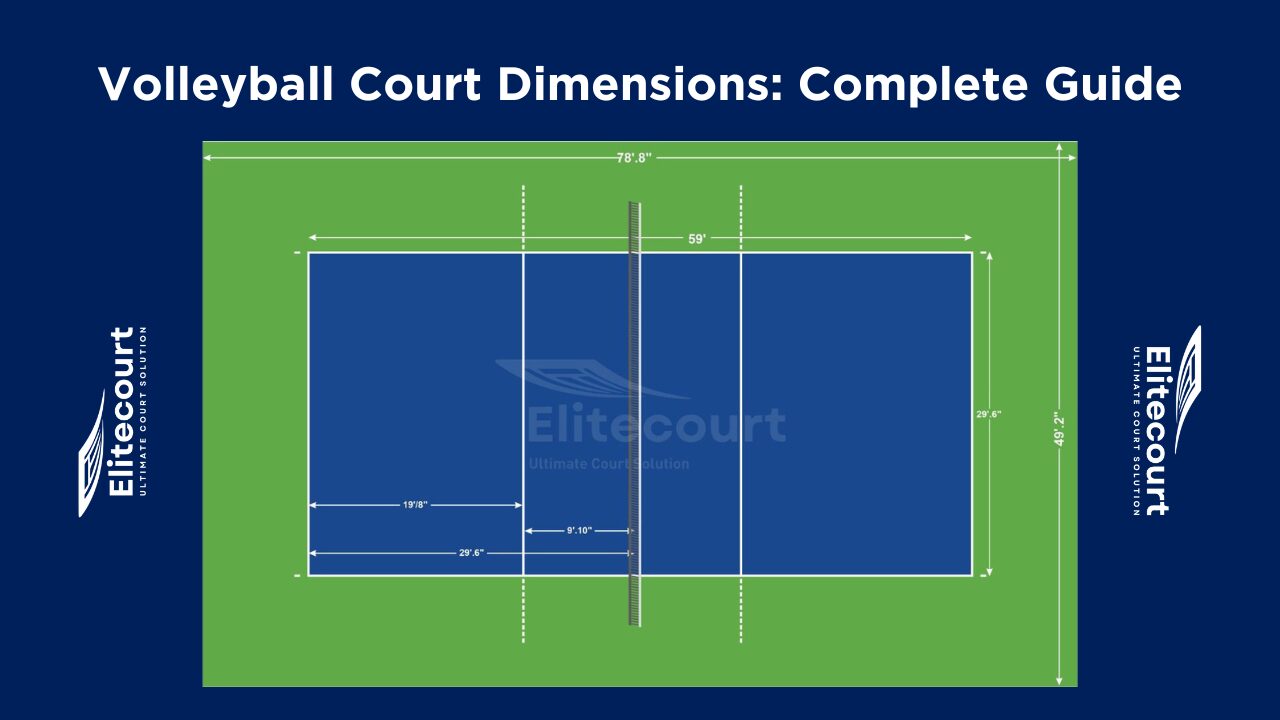Concrete v/s Bitumen Sports Flooring

Table of Contents
When it comes to sports flooring, selecting the right base material is a critical decision that can significantly impact performance, safety, and the overall experience of athletes. While concrete has long been a popular choice, bitumen base for acrylic sports flooring offers a range of advantages that make it a winning option.
Introduction
In the realm of sports facilities, selecting the right flooring material is a critical decision. It directly impacts the athletes’ performance, safety, and the overall longevity of the court. Two popular options that often emerge in this context are concrete and bitumen. Elitecourt, a leading authority in sports facility solutions, aims to shed light on the differences between these two Surfaces, assisting you in making an informed decision for your sports flooring needs.
The Case for Concrete Flooring
Advantages of Concrete Flooring
Concrete floors have a solid reputation for their sturdiness and versatility. They provide excellent stability for sports like basketball, volleyball, and tennis. Concrete also offers a consistent bounce for balls, aiding in fair gameplay.
Considerations for Concrete Flooring
While concrete offers durability, its hardness can lead to higher impact stress on athletes’ joints. Moreover, it requires proper maintenance to prevent cracking and must be sealed to resist moisture penetration.
Transform Your Sports Facility Today!
Contact us for high-quality synthetic sports flooring material and elevate your space!
The Case for Bitumen Flooring
Benefits of Bitumen Flooring
Bitumen, a flexible and shock-absorbent material, has gained popularity for sports like running tracks and outdoor courts. It provides a cushioning effect, reducing the risk of injuries. Bitumen’s slightly textured surface offers traction for quick movements.
Factors to Consider with Bitumen Flooring
Bitumen may not be suitable for indoor facilities due to its odor and susceptibility to temperature changes. Proper installation is essential to ensure a level surface, and consistent upkeep is necessary to maintain its performance.
Concrete vs. Bitumen: Elitecourt’s Guide to Choosing the Best Sports Flooring Surface
Flexibility and Shock Absorption
One of the standout advantages of bitumen base for acrylic sports flooring is its exceptional flexibility and shock-absorbing properties. Unlike concrete, which can be rigid and unforgiving, bitumen offers a cushioning effect that significantly reduces the impact on athletes’ joints. This is particularly crucial in sports involving rapid movements, such as basketball, volleyball, and tennis. The ability of the bitumen base to absorb shock not only enhances comfort but also contributes to injury prevention, allowing athletes to push their limits while minimizing the risk of strain or injury.
Surface Resilience and Durability
Bitumen’s inherent elasticity provides it with remarkable resilience, making it highly durable even under heavy use. This resilience is especially beneficial for sports like basketball and tennis, where athletes frequently pivot, jump, and make sudden directional changes. The bitumen base can withstand the stresses of these dynamic movements without cracking or deteriorating, resulting in a longer-lasting playing surface. This durability translates to reduced maintenance costs and extended periods of optimal performance for sports facilities.
Temperature Adaptability
Acrylic sports surfaces laid on bitumen bases demonstrate superior temperature adaptability compared to those on concrete. Bitumen is known for its ability to expand and contract with changing temperatures, which minimizes the risk of cracks and surface irregularities. This characteristic makes bitumen-based acrylic sports flooring particularly suitable for outdoor courts, where exposure to varying weather conditions is unavoidable. Athletes can continue to enjoy a consistent and reliable playing surface regardless of the climate, enhancing the overall sports experience.
Seamless Application and Uniform Surface
Bitumen offers the advantage of being applied as a seamless base, resulting in a uniformly smooth surface. This eliminates any potential trip hazards or irregularities that might be present in concrete-based flooring. A seamless bitumen base creates an even and predictable playing surface, enhancing athletes’ confidence in their movements and allowing them to focus entirely on their game.
Cost-Effectiveness
In addition to its performance benefits, bitumen-based acrylic sports flooring can also be a cost-effective option. The installation process is often quicker and less labor-intensive compared to pouring and curing concrete. This can translate to reduced labor costs and shorter facility downtime during installation. Furthermore, the extended durability of the bitumen base contributes to lower long-term maintenance and replacement expenses, making it an economically sound choice for sports facility owners.
Transform Your Sports Facility Today!
Contact us for high-quality synthetic sports flooring material and elevate your space!
Conclusion
In the realm of acrylic sports flooring, the choice of base material is a decision that should not be taken lightly. While concrete has traditionally been the go-to option, the advantages of bitumen base for acrylic sports flooring are undeniable. The flexibility, shock absorption, durability, temperature adaptability, and cost-effectiveness offered by bitumen make it a standout choice for both indoor and outdoor sports facilities. Athletes and facility owners alike can benefit from a playing surface that enhances performance, reduces injuries, and ensures long-term satisfaction. With bitumen-based acrylic sports flooring, the stage is set for a winning experience on every level.








